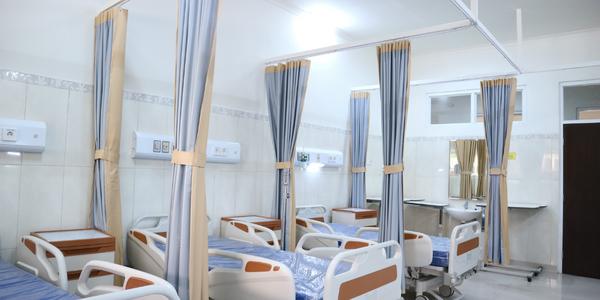Download PDF
A Philadelphia Problem Solver Carves Out Spaces to Light
Technology Category
- Application Infrastructure & Middleware - Data Visualization
- Functional Applications - Remote Monitoring & Control Systems
Applicable Functions
- Facility Management
- Business Operation
Use Cases
- Building Automation & Control
- Indoor Positioning Systems
- Visual Quality Detection
Services
- Software Design & Engineering Services
- System Integration
The Challenge
The Philadelphia International Festival of the Arts (PIFA) 2013 presented a unique challenge for lighting designer Joshua L. Schulman and his team. They were tasked with creating an interactive time machine exhibit that would serve as the festival's hub. The concept, conceived by the Kimmel Center's artistic director Jay Wahl, was nebulous and required extensive brainstorming to define the user experience. The design team explored various ideas, from H.G. Wells' science fiction to the time-traveling DeLorean from 'Back to the Future,' before settling on a spiraling exhibit inspired by a double helix of DNA. The challenge was to make the exhibit interactive and engaging for the estimated 100,000 visitors. Additionally, the Kimmel Center's architecture, with its glass roof and varying sunlight conditions, posed significant challenges for lighting and video projection.
About The Customer
Joshua L. Schulman is a lighting designer who played a crucial role in the Philadelphia International Festival of the Arts (PIFA) 2013. The festival, held at the Kimmel Center for the Performing Arts, featured a variety of live performances, educational programs, and a 100-foot-long time machine experience. Schulman was part of a team that created this interactive exhibit, which served as the festival's hub and attracted an estimated 100,000 visitors. Schulman has a history of collaborating with the Kimmel Center's artistic director, Jay Wahl, and has previously worked on the Hidden City Philadelphia Festival in 2009. His expertise in lighting design and problem-solving capabilities have earned him several awards and recognition in the field.
The Solution
To address the challenges, Schulman and his team used Vectorworks Spotlight with Renderworks software to model and render the exhibit plan. The software helped them solve issues like preventing light from passing through the structure's gaps and positioning a giant structure of 600 crystals. The crystals were suspended in a cluster and interacted with visitors' heartbeats to create a mesmerizing light and color show. Motion-sensing technology was also integrated to modulate the pulse of sound and light based on visitors' movements. Schulman used the software to experiment with different lighting setups, especially to counteract the varying sunlight conditions inside the Kimmel Center. By modeling the Kimmel Center and using basic photometrics, Schulman figured out how to light the tube's interior interactively. The software allowed for real-time testing and adjustments, enabling the team to make accurate design decisions quickly. This iterative process saved time and money, ensuring the success of the interactive exhibit.
Operational Impact
Quantitative Benefit
Related Case Studies.

Case Study
Turning A Stadium Into A Smart Building
Honeywell created what it called the “intelligent system” for the National Stadium in Beijing, China, turning the venue for the opening and closing events at the 2008 Summer Olympics into a “smart building.” Designed by highly controversial artist Ai Weiwei, the “Bird’s Nest” remains one of the most impressive feats of stadium architecture in the world. The 250,000 square meter structure housed more than 100,000 athletes and spectators at a time. To accommodate such capacity, China turned to Honeywell’s EBI Integrated Building Management System to create an integrated “intelligent system” for improved building security, safety and energy efficiency.

Case Study
BACnet enabled Wireless Temperature Monitoring System
Client offered a Temperature Monitoring System which consists of Wireless Transmitters and Application Software. Third party BACnet Application such as a Building Automation System needs access to vital parameter such as temperature, humidity, CO2, etc., measured by wireless sensor devices. Client needed a solution to allow data exchange from its Temperature Monitoring System with BMS.

Case Study
Medanta the Medicity
Medanta is one of India's largest multi-super specialty institutes located in Gurgaon, India. Some of the key challenges facing Medanta included: - No Monitoring & Control over Energy Use, Indoor Air Quality, Indoor Lighting Quality & Noise Levels. - No compliance monitoring of temperature & pressure in critical care wards. - Energy bills were a surprise with no way to forecast energy costs. - Missing data & insights that could be used for targeting areas of improvement. - Existing Billing Management System (BMS) was inflexible and could not be used across the enterprise to serve the needs of different users. Requirements Based on these challenges, Medanta was looking for a comprehensive solution to Monitor & Control: - Energy Usage - Power Generators - Clean Rooms - HVAC Temperature - Chiller Temperature - Hydrant Pressure - Air Quality & Noise Levels - Critical Wards

Case Study
Sirqul and Catalyst Workplace Activation Reveal the Future of Smart Offices
This partnership will disrupt the “traditional” office furniture conversation by examining the intersection of people, place, and technology. We realize it is increasingly evident that the design of spaces is an enabler to meaningful interactions between people and fosters a sense of community and culture by taking on the challenges of designing for a more productive, collaborative, and inspiring workplace, leveraging technology to process data on how people work, communicate and engage with one another.






